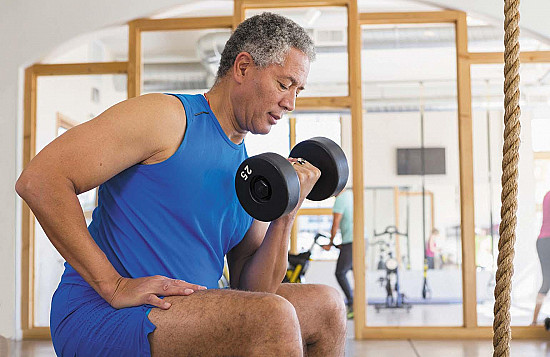Chest workouts: Exercises for strength and function
- Reviewed by Lauren Elson, MD, Contributor; Editorial Advisory Board Member, Harvard Health Publishing
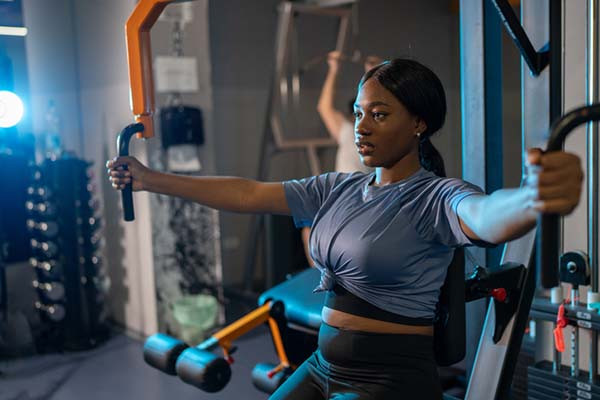
Chest exercises are an important way to build upper body strength. Strengthening the muscles making up the chest can help you achieve a strong, sculpted physique. But building the chest muscles offers a myriad of benefits beyond looking toned.
What are the benefits of chest exercises?
Your chest muscles — pectoralis major and pectoralis minor — allow you to rotate your shoulders and bring them in and forward. They also stabilize your shoulders, which allows you to move your arms up, down, in, and out. Your chest muscles are important for everyday activities such as pushing open a door, pushing a grocery cart, or lifting a child up from the floor. They're also crucial for performing sports such as swimming, baseball, or tennis.
Like the back muscles, strong chest muscles are important for good posture. And building up your chest muscles can help improve shoulder stability and reduce your risk of shoulder injury.
Strength training exercises for a stronger chest
Chest exercises, whether performed with body weight, free weights, or resistance bands, are a form of strength training. Strength training is exercise that builds muscles using resistance. According to the U.S. Department of Health and Human Service's Physical Activity Guidelines for Americans, adults ages 18 to 64 should perform a complete strength training routine two or three times a week.
Strength training not only makes you stronger, but offers a wide range of other health benefits, including:
- increasing your metabolic rate
- curbing muscle loss and building new muscle
- slowing bone loss
- improving insulin sensitivity
- easing joint pain.
When adding chest exercises to your exercise routine, remember to exercise muscles throughout the body for a well-rounded strength program. In addition, try to balance strength training with other forms of exercise such as aerobic activity, flexibility exercises, and (for older adults) balance exercises.
With all exercise programs, check with your doctor before you begin.
Sample chest workout
You can work the muscles of the chest with exercises that incorporate barbells, medicine balls, dumbbells, kettlebells, or cable pulleys. But you can also work chest muscles with no or minimum equipment, or even your own body weight for resistance.
The exercises below can help strengthen your chest muscles. When you are training for strength, aim for eight to 12 repetitions or "reps." If you cannot do all the reps at first, just do what you can, and then gradually increase reps as you improve. Beginners can start with one set of reps (one set on each side in the case of wood chops), working up to three sets as you get stronger. Rest 30 to 90 seconds between sets.
Chest punches
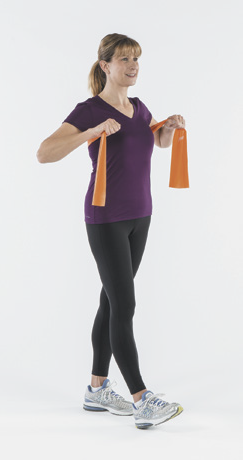
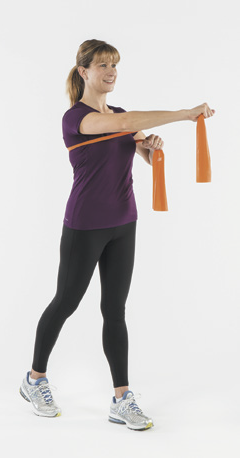
Starting position: Place the exercise band around your back and under your armpits. Hold an end in each hand by your shoulders.
Movement: With control, punch your right arm out in front of you on a slight diagonal across your body. Slowly bring it back to the starting position. Repeat with your left arm. That's one rep.
Chest press
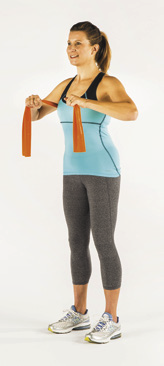
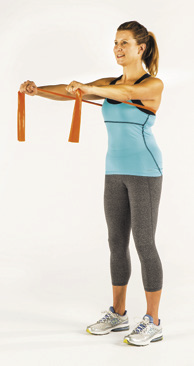
Starting position: Stand tall with your feet about shoulder-width apart. Place a band across your upper back and under your arms. Hold each end with your arms bent, elbows pointing out and your hands by your armpits, palms down.
Movement: Extend your arms straight out in front of you at chest height, stretching the band. Slowly bend your arms and return to the starting position, resisting the pull of the band.
Wood chop
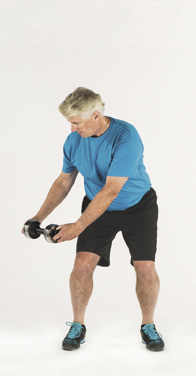
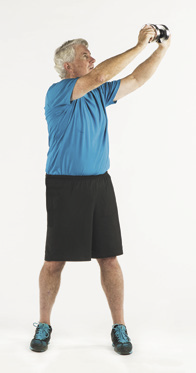
Starting position: Stand with your feet about shoulder-width apart and hold a dumbbell with both hands. Hinge forward at your hips and bend your knees to sit back into a slight squat. Rotate your torso to the right and extend your arms to hold the dumbbell on the outside of your right knee.
Movement: Straighten your legs to stand up as you rotate your torso to the left and raise the weight diagonally across your body and up to the left, above your shoulder, while keeping your arms extended. In a chopping motion, slowly bring the dumbbell down and across your body toward the outside of your right knee. This is one rep. Finish all reps, then repeat on the other side. This completes one set.
Kneeling push-up

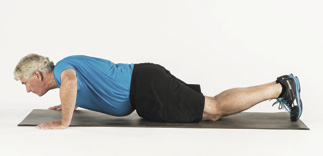
Starting position: Begin on the floor on all fours with your hands slightly more than shoulder-width apart. Walk your hands forward and lower your hips so your body is at a 45° angle to the floor and forms a straight line from head to knees.
Movement: Bend your elbows out to the sides and slowly lower your upper body toward the floor until your elbows are bent about 90°. Press against the floor and straighten your arms to return to the starting position.
Squat and overhead toss
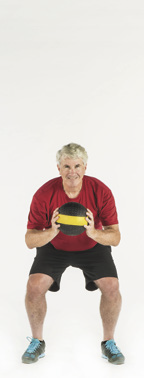
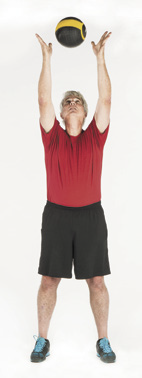
Starting position: Stand tall with your feet about shoulder-width apart, toes pointed out slightly. Hold a medicine ball with both hands at chest height, arms bent.
Movement: Bend your hips and knees, and squat down. Don't let your knees move farther forward than your toes. Press into your heels to stand back up. As you rise, toss the ball overhead and catch it, bringing it back to chest height.
Exercise photos by Michael Carroll
About the Author

Jenette Restivo, Health Writer; Assistant Director for Digital Content Creation and Engagement, Harvard Health Publishing
About the Reviewer

Lauren Elson, MD, Contributor; Editorial Advisory Board Member, Harvard Health Publishing
Disclaimer:
As a service to our readers, Harvard Health Publishing provides access to our library of archived content. Please note the date of last review or update on all articles.
No content on this site, regardless of date, should ever be used as a substitute for direct medical advice from your doctor or other qualified clinician.













